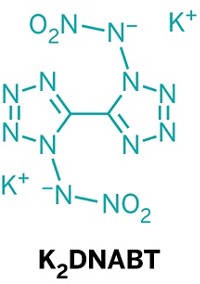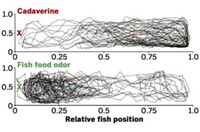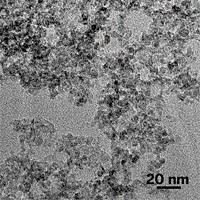Advertisement
Grab your lab coat. Let's get started
Welcome!
Welcome!
Create an account below to get 6 C&EN articles per month, receive newsletters and more - all free.
It seems this is your first time logging in online. Please enter the following information to continue.
As an ACS member you automatically get access to this site. All we need is few more details to create your reading experience.
Not you? Sign in with a different account.
Not you? Sign in with a different account.
ERROR 1
ERROR 1
ERROR 2
ERROR 2
ERROR 2
ERROR 2
ERROR 2
Password and Confirm password must match.
If you have an ACS member number, please enter it here so we can link this account to your membership. (optional)
ERROR 2
ACS values your privacy. By submitting your information, you are gaining access to C&EN and subscribing to our weekly newsletter. We use the information you provide to make your reading experience better, and we will never sell your data to third party members.
Analytical Chemistry
Mystery Behind Iron's Smells Is Revealed
'Metallic' odors attributed to iron are due to organic carbonyl and organophosphine compounds
by Stephen K. Ritter
October 25, 2006
For centuries, humans have been perplexed by the musty metallic odor associated with handling iron objects or rubbing away a drop of blood from a cut. Also perplexing is the garlicky odor noticed by metallurgists when cast iron or steel rich in carbon and phosphorus is treated with an acid. An international research team now reports definitive identification of the chemical sources of these odors (Angew. Chem. Int. Ed. 2006, 45, 7006).
Dietmar Glindemann and Andrea M. Dietrich of Virginia Polytechnic Institute & State University exposed human skin to various forms of iron and used mass spectrometry to show that the resulting metallic odor is due largely to volatile 1-octen-3-one. Similar enones have been identified previously in human sweat. They also showed that copper and brass (a copper-zinc alloy) also give rise to metallic odors.

The researchers believe that 1-octen-3-one, which is used commercially as a fragrance in toiletries and as a food flavoring, forms along with C6 to C10 n-aldehydes by a redox reaction between iron in the metal objects and lipid peroxides formed from polyunsaturated fatty acids in skin oil. When iron objects come in contact with the skin, perspiration oxidizes the metal to Fe2+ ions, and the metal ions reduce and decompose the lipid peroxides to the "bouquet" of organic carbonyl compounds. In blood, iron is already available as Fe2+ in heme molecules.
Test subjects immediately recognized the musty iron odor when they handled pieces of the metal or a solution containing Fe2+ ions. In contrast, the testers didn't sense the odor when smelling a piece of metal they didn't touch or when Fe3+ solutions were applied.
"The smell of iron on contact with skin is ironically a type of human body odor," Glindemann notes. "That we smell the metal itself is actually an illusion." Human sensitivity to this particular odor may have evolved from the need to track wounded prey or injured family or tribal members, the researchers suggest.
Besides solving an age-old mystery, the researchers believe that specific sets of organic carbonyl compounds could be used as "chemical fingerprints" for an individual's body odor, which could be used as a diagnostic test for certain diseases. The combination of the taste of metal ions on the tongue and metal-catalyzed odors in the mouth could be used, for example, to understand and prevent the sometimes metallic flavor of treated drinking water or even the foul metallic taste experienced by chemotherapy patients, Dietrich says.
As for the garlicky odor associated with "acid-pickled" phosphorus-rich iron, metallurgists previously have attributed it to phosphine gas (PH3). Dilute phosphine is essentially odorless, however, and the researchers, working with colleagues in Germany, showed that the real source of the odor is not phosphine but primarily methyl- and dimethylphosphines.
That the corrosion of cast iron produces such organophosphorus compounds is unexpected, they say, and could interfere with environmental monitoring of these compounds to verify adherence to the Chemical Weapons Convention.






Join the conversation
Contact the reporter
Submit a Letter to the Editor for publication
Engage with us on Twitter